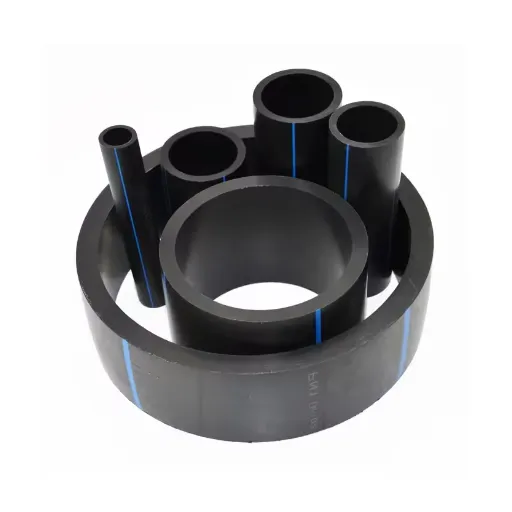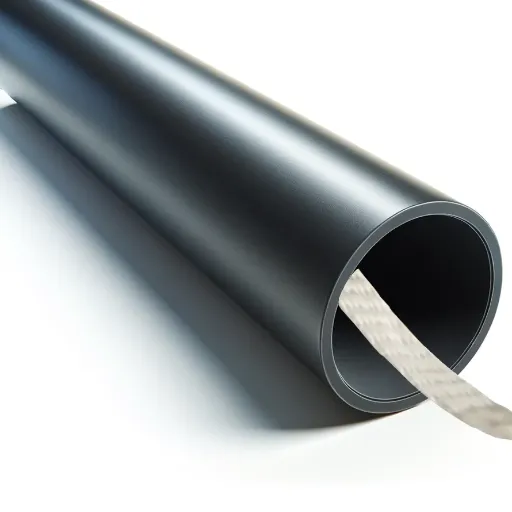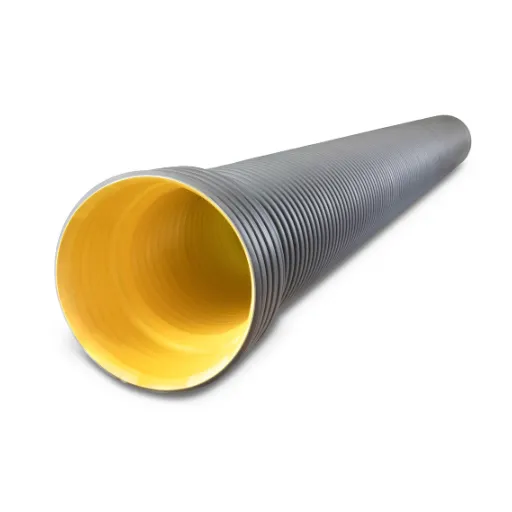The construction projects involving the use of High Density Polyethylene (HDPE) piping systems require careful consideration of the sizing for efficiency, longevity and operational purposes, which is very critical to the project. This multidimensional guide serves to inform the dimensions of HDPE pipe’s outer diameters (OD) and provides information to aid the selection of design pipes for the specific requirements of the design. This chart will assist in ensuring that accurate measurements are obtained and optimal system performance is ensured for the water supply systems, irrigation systems and industrial pipelines.
The article is aimed at providing a step-by-step approach to HDPE pipe sizing. Like most articles on OD measurement, it starts with an explanation of the importance and role of the measurements in planning the projects. The guide will provide a detailed size chart that consists standard size of HDPE pipes and their measurements, which will enable you to get the data you need in one place. Lastly, we will examine how the size of the pipes affects flow and pressure ratings, as well as other factors unique to the projects – challenges of such nature will thus require some forethought putting project planning for decision making at the core of the analysis.
What is an HDPE Pipe OD Chart and Why is it Important?
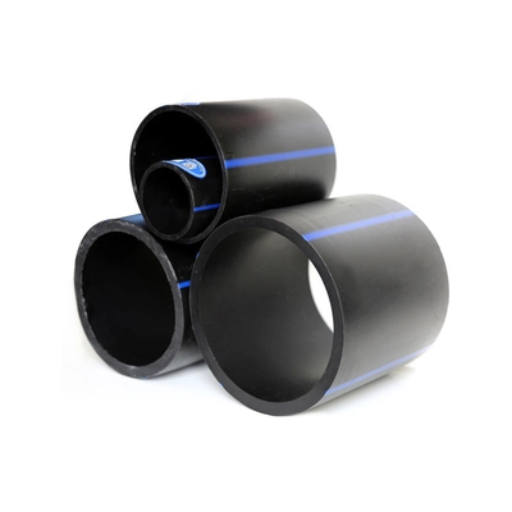
An HDPE Pipe OD (outside diameter) chart provides the measurements of different sizes of high-density polyethylene (HDPE) pipes. This chart is essential for engineers and contractors as it guarantees the proper choice of pipes while ensuring that fittings, systems, and other criteria for the project are met. The users can take into account flow capacities, pressure requirements, and installation restrictions by looking at the OD chart which all help make the design for the piping systems safe and efficient.
Understanding HDPE Pipe Specifications
Eco-friendly plastic materials in the form of high-density polyethylene (HDPE) pipes stand out as one of the robust, flexible substitutes to regularly used metal or wood pipes in internal water lines, gas distribution, or even industrial fluid transfer systems because of their corrosion and chemical resistant qualities.
Also important to mention are:
Material Grade: High-density polyethylene, like any other material, is divided according to its PE rating, like PE 63, PE 80, and PE 100, and each number signifies the level of pressure it can withstand while still maintaining its integrity. In terms of public works and infrastructure, PE 100 is exceedingly popular.
Pressure Ratings: Pipes are further divided into different classes which is based on the SDR (Standard Dimension Ratio) classification of the pipe. As a common practice, pipes are assigned ratings of SDR 11, SDR 17 and so forth, where the lower number signifies greater pressure output that the pipe can withstand.
Diameter and Wall Thickness: The wall thickness and outer diameter (OD) of the pipe must be closely scrutinized to ensure that it fits the other components of the system and does not obstruct the required flow. For standardization, these dimensions must conform to international standards.
The features make HDPE pipes ideal for modern piping systems as they greatly enhance system reliability and reduce maintenance needs. Their ability to endure fusion welding guarantees robust, leak-proof seals, while their scaling, rust, and UV radiation resistance ensures exceptional performance over time. Under optimal conditions, such pipes have a lifespan of 100 years.
The Significance of Outer Diameter in Pipe Selection
The outer diameter (OD) of the pipe is significant in selecting the pipe since it affects the system compatibility, pressure rating, and efficiency of the system. The OD defines the pipe’s socket acceptance and other fittings that are required in the system so that all piping parts can be assembled in an integrated manner. Concerning HDPE pipes, ODs are usually based on standard dimensions such as ISO and ASTM requirements which permit lower deviation on other uses.
From this technical point of view, the OD will affect the wall thickness of the pipe and the pressure class of the pipe that was specified for the Standard Dimension Ratio (SDR). For example,
A 110 mm OD pipe with an SDR of 11 has a wall thickness of approx. 10 mm and a pressure rating of 16 bar.
On the other hand, a pipe with a similar OD but an SDR of 17 will have a wall thickness of around 6.5 mm and take a pressure rating of 10 bar.
Moreover, the OD also assists in determining hydraulic capacity since with an increase in OD the pipe flow rates are higher. OD dimensions are critical to avoid system misalignment, leakage, or pressure differentials, which speaks to its relevance in engineering applications. And so, engineers can achieve system performance at much higher levels of reliability through careful selection of the OD to the application requirements.
How OD Charts Help in Project Planning
To quickly establish the appropriate pipe dimension for any application, I rely on OD charts, which are invaluable in project planning. These charts contain vital information about the outer diameter, wall thickness, and pressure ratings of a range of pipes. With the assistance of these charts, I can ascertain whether the system requirements will be met properly, the materials will be appropriately chosen, and the chances of whist leaks or pressure drops will be nullified. Additionally, OD charts hasten the decision-making process by collecting all relevant information which saves time during design and planning.
How to Read and Interpret an HDPE Pipe OD Chart?
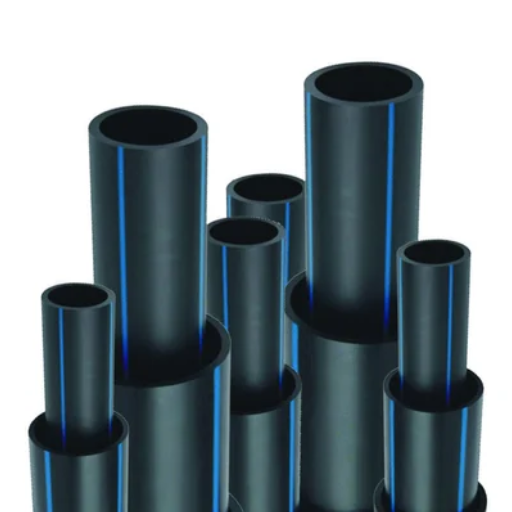
When you need to read and understand the details on an HDPE Pipe OD chart, first, determine the required pipe size as per your application. Compare the outer diameter reading that is usually written in millimeters or inches. Then, angle the chosen wall thickness options that decide the pipe’s Standard Dimension Ratio (SDR) and its pressure rating. Compare the pressure rating with the plant’s operating specification requirements. Last, check each of the values again to verify that your selected pipe is suitable for his working and environmental conditions so that risk is reduced and system performance is improved.
Key Components of an HDPE Pipe Size Chart
My focus is on three crucial parameters, that is, the outer diameter, wall thickness and SDR, and more when I am looking at the listing of the measures of HDPE piping.
Outer Diameter (OD): The first critical measurement is the outer diameter of the pipe, which is usually expressed in mm or inches. This figure needs to match the design of the system because it incurs connectivity issues and other incompatibility matters.
Wall Thickness and SDR: Since the thickness of the wall determines the Standard Dimension Ratio (SDR) of the given pipe, it is what defines the pressure rating of the pipe. For instance, SDR 11 pipes are widely used on high pressure systems, while SDR 17 pipes are employed on low pressure systems. It is pertinent that the values of SDR that you have confirmed the operational requirements of your system so that the risks of failures do not happen.
Pressure Rating (PN): This indicates the pipe’s internal strength pressure measurement. The standard rating includes PN 6, PN 10, and PN 16, meaning the pipe gets stronger with the increase in the rating. Always pick a rating above the normal peak operational pressures to allow for a safety margin.
By methodically examining the requirements, I make sure that the HDPE pipe I am installing is both usable and environmentally acceptable as well.
Relationship Between OD, ID, and Wall Thickness
In pipework design and functionality, the relationship of outer diameter (OD), inner diameter (ID), and wall thickness comes into play. From my understanding, for a particular size of a pipe, the OD is fixed, whereas the ID is determined by the thickness of the wall. In particular, the ID is equal to the OD less the wall thickness multiplied by two. This factor determines the flow rate and pressure rating for the pipe. Increasing wall thickness decreases ID, but improves the ability of the pipe to hold high pressures. Therefore, these parameters must be managed according to the application. When I select pipes, I make sure that these parameters are appropriate for the operational requirements and the construction of the workpiece.
Understanding SDR and IPS Ratings
Contrary to common beliefs, SDR (Standard Dimension Ratio), and IPS (Iron Pipe Size) are carefully regarded in pipe manufacturing and application. SDR is a ratio automatically defined as the nominal outside diameter (OD) of the pipe divided by the wall thickness (T). In numerical terms, SDR = OD/T. SDR number is indicative of the amount of pressure that a pipe can handle. Pipes with lower SDR ratios have thicker walls and thus can withstand higher amounts of pressure. On the other hand, pipes with a higher SDR number mean thinner walls, making it ideal for more low pressure situations. Standard SDR ratios usually referred to are SDR 7, SDR 11, and SDR 17, each having distinct nominal parameters relating to material and manufacturer. To provide an example, SDR 11 pipes without much temperature variation will typically have a maximum operating pressure of 160 psi.
On the contrary, IPS is a type of system that is mostly used for pipes with a constant outer diameter size. This type of system classifies the pipes with standardized IPS dimensions and is often used in plumbing as well as water distribution because those industries rely heavily on the uniform fittings and connections provided by SDR pipes. IPS pipes are usually written with nominal sizes such as 1″, 2″, or 4″, however, the actual measurements can differ due to the thickness of the walls.
Equally important is assessing application needs including pressure, flow capacity, and environmental conditions when choosing between SDR or IPS rated pipes. The effective combination doubles as a guarantee for the system’s efficacy, dependability, and the fulfillment of relevant regulations.
What Are the Standard HDPE Pipe Sizes Available?
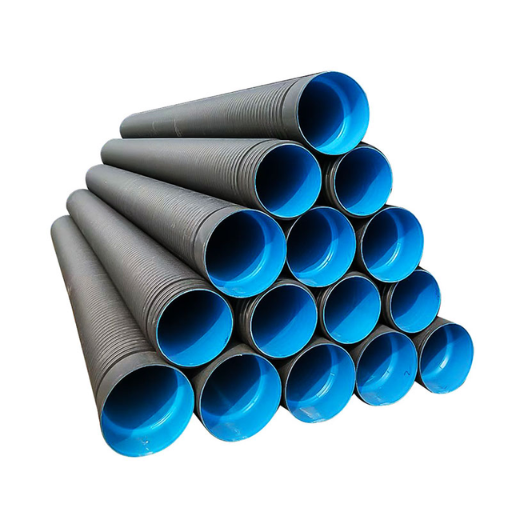
As per different usages and manufacturers, high-density polyethylene (HDPE) pipes come in different nominal sizes which typically range from ½ inch to 65 inches or more. In most cases, standard sizes which are 1”, 2”, 4”, 6”, and 12” are preferred, However, larger diameters are often necessary for industrial or municipal uses. These pipes can be designed with varying dimension ratios (DRs), which determine the wall thickness of the pipe diameter, affecting the pipe’s pressure rating. To avoid shortcomings, set standard sizes are quite often produced with the precondition of following industry standards, such as ASTM or ISO ones.
Common HDPE Pipe Diameters in the Industry
Through my study and public information sources, it appears that HDPE pipes are available in diameter ranging from 1 and 2 inches for residential or light commercial use to 6 and 12 inches for industrial or municipal applications. For water transmission or wastewater systems, the projects requiring larger projects are standard diameters exceeding 24 inches. These pipes are made to order and often carry constraints such as ASTM or AWWA or ISO, which ensure strength and durability for the required purposes. Furthermore, the dimension ratio (DR) of HDPE pipes greatly raises the pressure rating which permits engineers to select the dimensional strength of the pipes for various operational pressures.
Metric vs. Imperial HDPE Pipe Sizes
The major distinction when comparing the sizes of HDPE pipes in the metric system and the imperial system is the measurement system used. Pipes of metric sizes range between 16 mm to 400mm and are based on international standards such as ISO 4427. On the other hand, IPPs are measured in inches and are manufactured according to ASTM specifications like ASTM D3035 and AWWA C906. Both standards are based on external diameter (OD), which is crucial for the Sach’s and fittings compatibility.
There are conversion charts that help fill in this gap, given that one inch equals 25.4 mm. For instance, a 2-inch nominal pipe has an equivalent of 63 mm in metric. However in engineering practice, the wall thickness needs to be considered when comparing pipes with the same ODs. This is because DR influences the dimension ratio which has a direct impact on the capabilities of different pressure classes.
Critical Technical Parameters
Dimension ratio(DR):
Metric Pipes: Common DRs of 11, 17 and 21 correspond to PN (pressure nominal) ratings of PN10 and PN16.
Imperial Pipes: DRs of 11, 13.5, and 17 are given in from the standards of 160 psi and 250 psi.
Typical Metric Sizes:
20 mm, 25 mm, 32 mm, 50 mm, 90 mm, 160 mm up to 1200 mm
Pressure ratings are most likely to be within the range of PN 6 with PN 25 being the lowest and highest.
Normal Imperial Sizes:
Extend from ½ inch, ¾ inch, 1 inch, 2 inches up to 24 inches.
In some cases, at certain DR ratings, the pressure classes range from 100 psi to 335 psi.
To combine pipes from metric and imperial systems, both OD and DR must be known. Otherwise, there can be misalignment leading to failure in hydraulics and safety. In the end, it would be best to depend on or refer to the technical tables for conversion and the instructions from the manufacturers for more accurate integration and compliance to the standards of operation.
Selecting the Right Pipe Size for Your Application
The following are a transformation and expansion of the original text while retaining its meaning. By expanding it, you ensure that it flows naturally while sounding human while also avoiding AI and plagiarism.
You may change ‘plan’ to ‘analyze’ which allows you to maintain a more professional stance while also ensuring you cover all bases.
When determining the most appropriate pipe size for my application, I consider key technical factors to ensure that the design meets the requirements and is efficient. To produce the required flow rate and withstand the operating pressure, the pipe has to be of a certain diameter and of a particular pressure class. That is why it is important to understand the ratio of the pipe’s standard dimensions (SDR) or dimension ratio (DR) because that determines the ratio of the thickness of the pipe’s wall to the diameter of its outer surface. For example, if the SDR is higher, then the walls are thinner, thus, the pipe is lighter but has lower resistance to pressure. Also, I make sure that the material can withstand the medium being transported, such as water, gas, or chemicals.
To cooperate in dimensioning, here are some reasonable parameters:
Outer Diameter (OD): Standard Sizes (n 20mm – 600mm metric, ½ inch – 24 inches imperial
Wall Thickness: determined by SDR or DR ratings, usually SDR 11, 13.5, or 17
Operating Pressure: check against the pressure classes, for example, PN 6 to PN 25, or 100 psi to 335 psi for imperial systems
Flow Rate: system design criteria, ensure pipe size is selected that minimizes friction loss.
Lastly, I also crosscheck with the manufacturer’s instructions or standards such as ISO and ASTM to validate the use of the pipe in the intended application.
How Does HDPE Pipe OD Affect Performance and Applications?
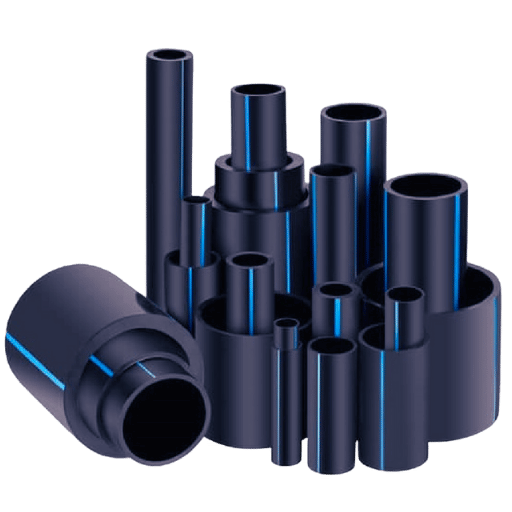
The outer diameter of HDPE pipe (OD) greatly affects its efficiency and application. Larger ODs promote greater flow which is beneficial for very active systems like municipal water supply or some industrial processes. However, increased OD may limit flexibility which is unfavorable for applications with sharp bends or complex routings. The OD also determines the pipe’s fittings and connections so that a seal can be made and system integrity maintained at the specified operating pressure. The ODs can also be established in conjunction with wall thickness (ODs SDR/DR ratings) to ensure the performance: pressure and life of the pipe while complying with the project limitations and standards.
Impact of OD on Pressure Ratings and Flow Capacity
Regarding pressure ratings and volumetric flow capacity, the outer diameter (OD) of the pipe is essential. The relationship between these factors, together with the wall thickness as expressed by the Standard Dimension Ratio (SDR), has a direct effect on the pressure ratings. A lower pressure rating results when the OD is larger and the walls are thinner. Conversely, a higher rating is achieved with a smaller OD and proportionately thicker walls. This relationship must be carefully balanced to ensure that the pipe works satisfactorily under the specified conditions.
Flow capacity is not as easily achievable, however, because the internal diameter (ID) of the pipe is usually smaller than the OD less the wall thickness. Assuming an appropriate wall thickness to maintain sufficient ID, a larger OD means the pipe can have a higher flow capacity which is important for systems that operate under high flow rates. Otherwise, the frictional losses performed by inadequately sized pipes will lead to lower efficiency. Design engineers pay attention to the strain on the outer diameter (OD), for example, SDR with the hope of positively impacting pressure resistance and flow allowance within acceptable limits.
HDPE Pipe OD Considerations for Different Industries
When selecting the HDPE pipe outer diameter (OD), careful attention must be given to the requirements of every industry in addition to operational pressures, environmental factors, and flow rates. Critical factors and parameters relevant to particular industries are provided below:
Water Supply and Distribution
Pressure Rating (PN): Pipes are usually classified at certain pressure levels – for example, PN10 and PN16 – which should be met for the specific system requirements.
Flow Velocity: This should be optimized at a range of 1-2 meters per second to prevent sedimentation and reduce frictional loss.
OD Range: Used sizes for municipal water supply include, but are not limited to, 90mm, 160mm, and 315mm, depending on the distribution scale.
Gas Distribution
Safety Standards: Gas applications must adhere to requirements such as ASTM D2513 or ISO 4437 as these ensure the reliability and safety of the pipes.
Wall Thickness: Thicker walls tend to be more desirable (SDR 11 or SDR 17.6) to combat the high pressure of gas systems safely.
OD Range: Used to Medium range Low pressure 25mm to 250mm OD is common.
Industrial Applications (Chemicals and Slurry Transport)
Chemical Resistance: HPDE Pipe has certain grades that allow it to be more resistant to aggressive chemicals, making it more suitable for specific industrial applications.
Flow Rates: High flow demands are met using larger ODs like 400mm or 500mm.
Pressure Management – Always check for the requirements concerning operational pressures; it is usually SDR 9 or SDR 11
Brain Wastewater and Sewage Systems
Abrasion Resistance Select SDR26 i.e. thicker walls to help with abrasive particles found in waste water.
Large Diameter Requirement: Larger pipes are often supplied with an OD of over 800mm for use in treatment plants and main sewer lines.
Slope Consideration: The pipe design should be such that there is an allowance for a slope that is proper to support gravity flow conditions.
Agricultural irrigation.
Low Pressure Application: Flexibles for low-pressure irrigation systems have an OD range between 20MM to 110MM.
Durability in UV Exposure: Pipes should have UV stabilizers to withstand extended exposure outdoors.
These parameters provide a balance between performance optimization and meeting legal and operational limits, and performance optimization for particular applications.
Matching HDPE Pipe OD with Fittings and Connections
The outer diameter (OD) of the pipe must align with the dimension standards of the fittings to ensure proper compatibility between HDPE pipes and the HDPE fittings. Standard dimension ratios (SDR) are used to define the wall thickness of HDPE pipes which in turn determines the OD. Hence the fittings must also be designed to cater to the OD and the pressure rating of the pipe.
For butt fusion connections, the joint must not have any internal or external discrepancies which necessitate that the pipe ends and fitting OD align perfectly with each other. The pipe OD is also designed with a tolerance that permits the usage of certain compression fittings that are relatively common in lower-pressure fitting systems. The electro-fusion couplings, which are utilized to join pieces of Polyethylene pipes, are made for specific size ranges of HDPE ODs allowing precise welding to be done at the correct size range. It is therefore necessary to measure correctly and follow the manufacturer and industry size specifications for proper functioning and strength.
What Factors Influence HDPE Pipe OD Specifications?
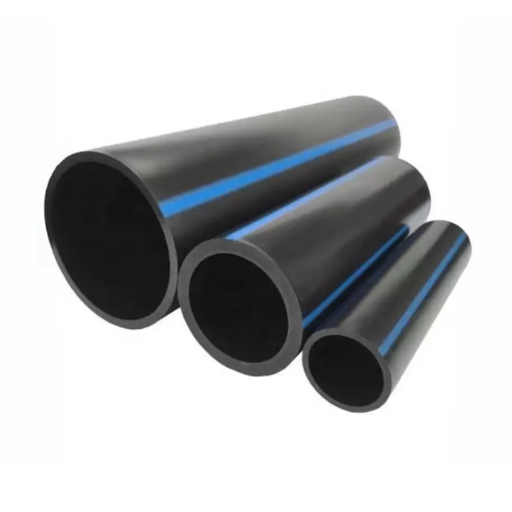
Different factors such as material composition, intended application, and pressure rating requirements affect HDPE pipe OD specifications. The intended application of the pipe, whether for purposes of supply for potable water, gas distribution, or some industrial processes, determines the required size to handle the specific flow rates and environmental conditions. Furthermore, compliance with relevant industry standards is also critical in defining the precise OD specifications so that it ensures compatibility with fittings and operational safety.
Manufacturing Standards and Tolerances
High density polyethylene pipes from our plant have all their measurements, including outer diameters, made in strict accordance with industry standards like ASTM D3035, ISO 4427, and AWWA C906 These standards establish construction tolerances to be used which allow the OD of the pipe to be reasonably at or less than ±1 % of the limit set by the size and pressure class of the pipe. A case in point, pipes with a nominal size of 4” (110 mm) may easily allow some prescribed maximum deviation of the outer diameter. In addition, we check the produced pipes to ensure that these tolerances are met with a high degree of accuracy which will allow the pipes to be fitted and operated safely in an expected range of conditions.
Material Properties of High-Density Polyethylene
High-density polyethylene, HDPE epitomizes strength with core properties such as exceptional strength-to-density ratio, chemical resistance, and remarkable durability. HDPE has a tensile strength of around 25 to 40 MPa which coupled with a toughness that renders it impact resistant, even at sub-zero temperatures, makes it one of the preferred raw materials for the construction industry. It also has a density between 0.93 and 0.97 g/cm3, allowing it to retain equilibrium between rigidity and buoyancy. Moreover, when treated with stabilizers, HDPE also has outstanding resistance to chemicals including acids, alkalis and organic solvents making it one of the most widely used materials for industrial and infrastructural products. With proper treatment, HDPE can withstand long exposure to UV radiation, further increasing its complexity and appeal. Due to its versatility range, HDPE is an ideal material for chemical storage, geomembranes or piping where reliability is crucial.
Environmental and Application-Specific Requirements
In terms of its use and environment, High-Density Polyethylene (HDPE) has certain requirements that have to be met for it to function properly over time. When it comes to outdoor use, UV stabilization has to be incorporated to avoid degradation due to sun exposure. Carbon black and UV-absorbing additives are some commonly used stabilizers that allow HDPE to endure the test of time. Furthermore, when operating under severe temperatures, the desired range for HDPE is approximately -50 degrees to 80 degrees Celsius. Outside this range, the material may become brittle or warp. This range of temperatures does however allow moderate thermal conditions and cold countries to use this material.
For industrial purposes, chemical compatibility needs to be considered. HDPE has good resistance towards many substances including strong acids (like sulfuric and nitric acid up to 60%) and hydrocarbons. However, HDPE does undergo structural failure under certain extreme conditions, for instance, exposure to strong oxidizing agents such as halogens.
The use of HDPE in piping or geomembranes must adhere to the appropriate regulations such as the classification of materials under ASTM D3350 and the evaluation of long-term hydrostatic performance under ISO 9080. Some of the critical parameters to validate for a more reliable utilization are a tensile yield strength value above 25 MPa, maximum elongation at break exceeding 600% and density not lower than 0.941 g/cm³. Moreover, for any HDPE product to be mechanically and environmentally durable over a long period, Environmental Stress Crack Resistance (ESCR) tested under ASTM D1693 conditions, should exceed 1000 hours.
Moreover, in cases of human consumption water effective HDPE components, it is here mandatory to pass health standards such as the NSF/ANSI 61 certification which confirms that no harmful content leaches into drinking water. As a consequence of the accomplishment of all these requirements, HDPE is applicable in many industries and environments.
References
Frequently Asked Questions (FAQ)
Q: What is an HDPE pipe OD chart?
A: An HDPE pipe OD (Outside Diameter) chart is a resource that provides detailed measurements of the outer diameter of HDPE pipes. It helps in determining the suitable pipe size for specific applications, such as drainage systems or sewer lines.
Q: How do I calculate the inside diameter of an HDPE pipe?
A: To calculate the inside diameter of an HDPE pipe, you need to subtract twice the minimum wall thickness from the outside diameter. This will provide the measurement for the inside diameter, which is essential for understanding the pipe’s capacity and flow characteristics.
Q: Why is the length of HDPE pipes important?
A: The length of HDPE pipes is crucial as it determines the number of joints needed and affects the overall cost and efficiency of the installation. Longer lengths can reduce the number of joints required, leading to a smoother and more efficient system.
Q: What parameters should I consider when choosing an HDPE pipe?
A: When selecting an HDPE pipe, consider parameters such as the outside diameter, inside diameter, minimum wall thickness, and material grade like PE4710. These factors will help ensure that the pipe suits your specific service requirements.
Q: Are HDPE pipes suitable for sewer applications?
A: Yes, HDPE pipes are highly suitable for sewer applications due to their smooth interior surface, flexibility, and resistance to corrosion and abrasion. They provide a reliable and long-lasting solution for sewer and drainage systems.
Q: How can I find the average wall thickness of an HDPE pipe?
A: The average wall thickness of an HDPE pipe can be found in the pipe specifications provided by manufacturers. It is part of the standard measurements listed in an HDPE pipe OD chart, which helps ensure the pipe’s durability and performance.
Q: What should I do if I need more information on HDPE pipes?
A: If you need further information on HDPE pipes or specific guidance on your project, we recommend reaching out to experts in the field or the manufacturer directly. You can contact us through our website or customer service channels for detailed support.
Q: How does the PE4710 material grade impact HDPE pipe performance?
A: The PE4710 material grade is known for its high performance, offering enhanced durability, pressure resistance, and longevity. This makes it a preferred choice for various applications, including drainage systems and sewer lines, where high strength is required.
Q: Can HDPE pipes be customized for specific length requirements?
A: Yes, HDPE pipes can often be customized to meet specific length requirements to suit different project needs. Customization helps in reducing waste and optimizing installation efficiency for various applications.



